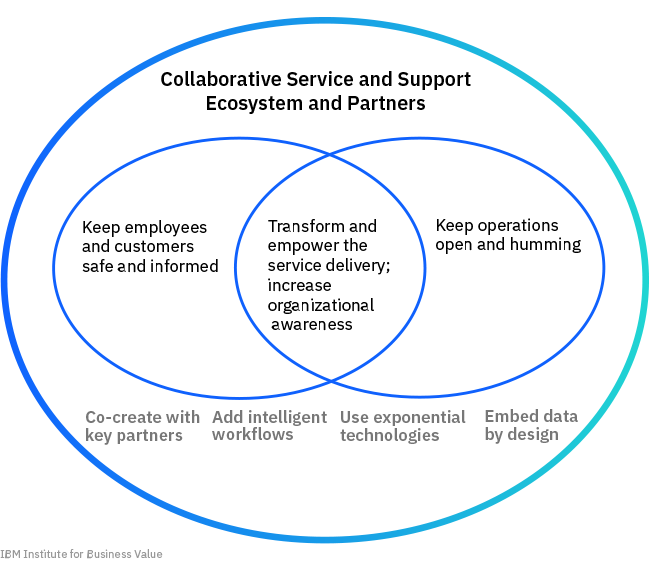Digital communication technology saved the day for many people, in many ways, during the COVID-19 pandemic. In the face of new perils, exponential technologies became absolutely necessary for customer service and after-sales support.
Could you imagine the appliance repair man coming into your home in 2020? And with new viral variants, most of us are still reticent to let anyone come into our house and possibly infect our families.
Scenarios like this play out across home environments and businesses, presenting a rising need for a Next Generation service model. Out of necessity, companies are asking:
- How do I distribute my most knowledgeable contact and field service agents to help customers?
- Can I diagnose and fix the product remotely?
- Can technicians use technology to speed up the repair or enable the end user to help perform the repair?
- How do I automate needed warranty and recall repairs without burdening agents?
- How do I keep my work teams and my customers safe?
Leveraging human-technology interactions
Necessity may or may not be the mother of invention but it sure can speed up technology adoption. Firms are now pursuing different avenues for handling service issues. They’re leveraging human-technology interactions crafted around safety-first principles, placing a new premium on low and no-contact work, alongside speed and quality of service.
The research conducted by IBM Institute for Business Value (IBV) identifies three models that companies are utilizing to deliver after-sales service and support—with the empowered customer service organization delivering superior customer satisfaction. In this study, we detail issues and call-out guiding principles to become an “empowered” customer service organization.
I was talking to someone recently and I explained this whole notion of empowered service for electronics like this: The pandemic forced us to reconsider every preconceived notion of service delivery. There was no ability to delay. Work needed to happen, and it had to flow as smoothly through organizations as possible.
It meant trusting partners, providing remote monitoring and self-serve capabilities, removing unnecessary or repetitive steps, considering technology you thought was reserved for video games or specialized purposes, and using data (by design) across the entire enterprise.
I also drew a sketch on the back of a napkin (see below). Sure, there are specifics underpinning all of this—and copious research—but this is the heart of empowered service.

With a workforce in limited supply and operating remotely, technology has certainly risen to the task. Companies are discovering that the pandemic has laid, wide open, a deep wound for which Band-Aids have been applied for years.
4 guiding principles for transformation
Old ways will no longer work. Companies must now transform their service organization to meet stringent requirements of a post-COVID world. Our paper, “Empowered electronics service and support: Creating data-driving human-technology interactions,” outlines four guiding principles needed to get there:
- Re-evaluate strategic principles. Look in the mirror. Is your corporate culture really “customer centric?” Is your customer service organization fully integrated in the enterprise? Analyze potential new partnership opportunities, especially around data and collaboration. We’ve learned that technology does not replace but augments human involvement.
- Understand interaction improvements between humans and technology. We’ve learned that technology does not replace, but augments, human involvement. Are you using “exponential technologies” to their fullest to support, augment, or alleviate processes to empower both the company and employee who service your cherished customers? Look for improvements to partner and use technology with mobility, such as how IBM is collaborating with Samsung Mobile on exponential technologies including 5G and AR/VR, to support field service technicians.
- Specify the next generation business architecture. Infuse intelligent workflows into the design. For new product innovation, focus on how to derive insights from your data from devices and use them to better service clients after-sale.
- Build the business case and workforce plan. Determine what services and functions you do well and consider how to “build” out that capability internally or outsource. “Buy” capabilities that are done best by others in your partner ecosystem. Find trusted partners with a deep bench-strength globally. For example, consider IBM's “Support as a Service.”
Brands that survive and even thrive during the pandemic have learned unimaginable lessons for building deeper trusting relationship and responding in creative ways. Customers are giving empowered service provider’s brands higher marks for satisfaction.
Lead the way
In the next decade, a “next generation, empowered” after-sales and service organization will lead the way. Successful firms will put customer service and support in the center of their company’s transformation. Some examples include our work with NetApp , KONE, and Maximo Worker Insights.
We’ve also proven that AI Powered service desks outperform traditional IT service desks and that AI is for Customer Service.
We’ve shown—and we use it ourselves—that augmented reality is reality with IBM Augmented Remote Assist.
Emerging out of this pandemic, we find a new spirit for innovation, using technology “for good,” and co-creating solutions with others to focus on what is most important. This delights my customer, who responds with a smile and “thank you” for a great product and service that’s fully integrated.
It’s personal. It’s not just technology inserted somewhere to patch or simply automate a task. It’s a re-building of the company with the customer as North Star.
We now recognize the urgency to transform, having dealt with impossible circumstances. There’s a path ahead to “empowerment” that will improve the working environment of employees who are on the front lines interacting with customers, and technologies in use that support the mission of product performance and client satisfaction.
I’m excited to share our new IBV study and insights as it touches us all… as consumers, users, customers, as well as employees of the small or large enterprise.
Take a look at the paper we just released, where we discuss how NextGen Service delivery boosts operational efficiency and customer retention. We’d love to talk to you about how you’re empowering post-sales service success.
Meet the author



